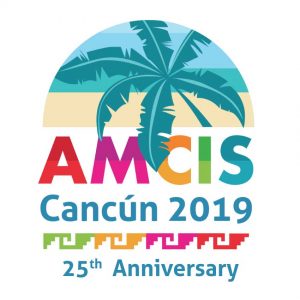Abstract
Something is transparent if one can see through. In organizations, transparency is something that allows or improves the view of processes and information by giving knowledge about them, reduces the possibility of omission, allows for control over products and services, facilitates research and increases trust between organizations and society. In the public context, citizen participation and the provision of government e-services created a demand for transparency. Issues such as knowing how government works, data availability, forms of usage, quality, reliability, sources, storage, and who is accessing them, deserve attention. All these characteristics relate to the concept of transparency. However, it is necessary to define how to make transparency explicit through processes and information in order to invest in making information and processes of an organization transparent. There are many interpretations of what transparency is and few researches proposing its concrete representation. A common understanding is a fundamental factor for its use. Leite and Cappelli (2010) organized all knowledge related to transparency, thus defining quality concepts that have contribution relationships among them. Our research aims to go further by discussing how to use this conceptualization to support the analysis, sharing and reuse of such knowledge as well as to develop a computational artifact capable of contributing to the understanding and processing of the relations between transparency related concepts. First, we consider the representation of transparency concepts and relations as an ontology based on the benefits that such artifact can bring, such as facilitating the sharing of information on the domain of transparency, making assumptions more explicit, and assisting the analysis of knowledge and relations in this domain. We believe that a defined ontology on transparency is fundamental since a consensus for all government agencies about this concept makes everyone show and evaluate transparency using the same characteristics. Moreover, they can understand the shown contents and use the ontology for consultation. Having that in mind, we are working on a generic domain ontology on Transparency, well-founded in UFO and using OntoUML as a modeling language (Guizzardi, 2005). OntoTrans is encoded in OWL (Web Ontology Language) and a prototype was built using OLED (Ontouml Lightweight EDitor) tool and instantiated on Protégé tool. We performed an evaluation scenario that suggests the feasibility of the proposed ontology and strengthens the research on the systematization of this applicability.
Recommended Citation
Pereira, Arthur M.; Cappelli, Claudia; baiao, Fernanda; and Nunes, Vanessa, "OntoTrans: An Ontology on Transparency" (2019). AMCIS 2019 Proceedings. 86.
https://aisel.aisnet.org/amcis2019/treo/treos/86
OntoTrans: An Ontology on Transparency
Something is transparent if one can see through. In organizations, transparency is something that allows or improves the view of processes and information by giving knowledge about them, reduces the possibility of omission, allows for control over products and services, facilitates research and increases trust between organizations and society. In the public context, citizen participation and the provision of government e-services created a demand for transparency. Issues such as knowing how government works, data availability, forms of usage, quality, reliability, sources, storage, and who is accessing them, deserve attention. All these characteristics relate to the concept of transparency. However, it is necessary to define how to make transparency explicit through processes and information in order to invest in making information and processes of an organization transparent. There are many interpretations of what transparency is and few researches proposing its concrete representation. A common understanding is a fundamental factor for its use. Leite and Cappelli (2010) organized all knowledge related to transparency, thus defining quality concepts that have contribution relationships among them. Our research aims to go further by discussing how to use this conceptualization to support the analysis, sharing and reuse of such knowledge as well as to develop a computational artifact capable of contributing to the understanding and processing of the relations between transparency related concepts. First, we consider the representation of transparency concepts and relations as an ontology based on the benefits that such artifact can bring, such as facilitating the sharing of information on the domain of transparency, making assumptions more explicit, and assisting the analysis of knowledge and relations in this domain. We believe that a defined ontology on transparency is fundamental since a consensus for all government agencies about this concept makes everyone show and evaluate transparency using the same characteristics. Moreover, they can understand the shown contents and use the ontology for consultation. Having that in mind, we are working on a generic domain ontology on Transparency, well-founded in UFO and using OntoUML as a modeling language (Guizzardi, 2005). OntoTrans is encoded in OWL (Web Ontology Language) and a prototype was built using OLED (Ontouml Lightweight EDitor) tool and instantiated on Protégé tool. We performed an evaluation scenario that suggests the feasibility of the proposed ontology and strengthens the research on the systematization of this applicability.


